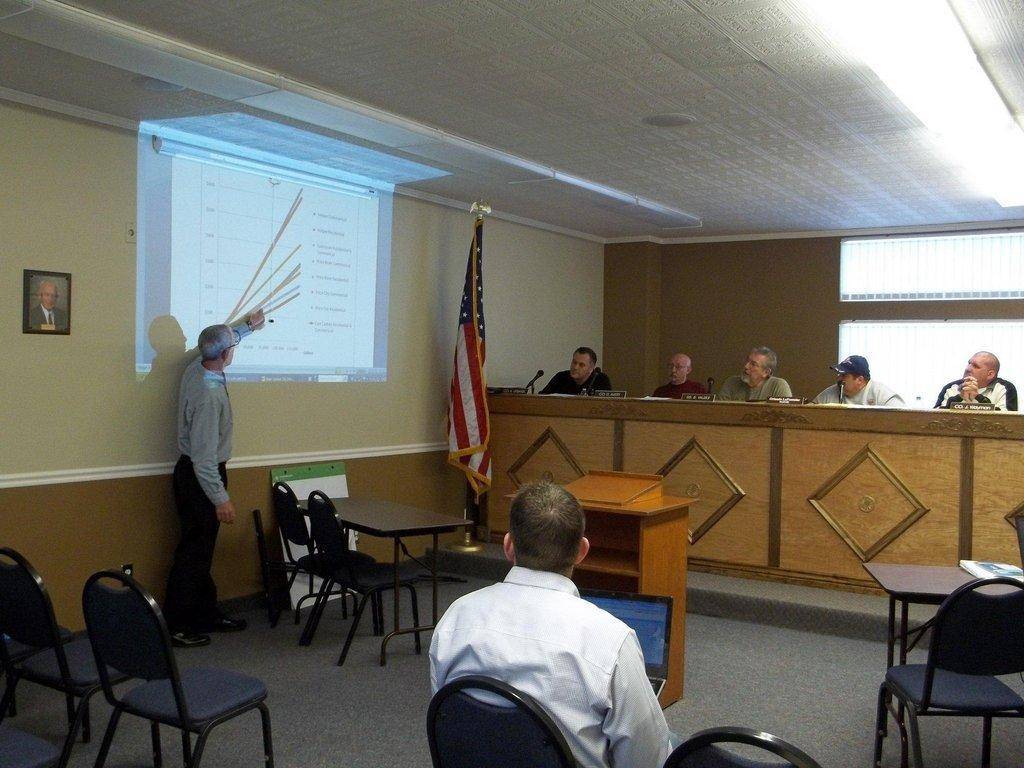The hot topic at the East Carbon City Council Meeting this week was expected to be the city’s recent move to enforce zoning regulations regarding having chickens in residential areas, but it never materialized. Instead, the Council was faced with the prospect of making huge increases to culinary water costs to match minimal requirements of both the state and federal agencies that grant funds for water projects.
Jay Mashburn, from the U.S. Department of Agriculture gave the Council a presentation regarding their water rates and how those rates match up to their operational costs, to other cities’ charges, to the minimal requirements of the funding agencies, and to the rate of inflation set by the Consumer Price Index for culinary water. He also revealed that he believed the city was in fact “subsidizing” water for neighboring Sunnyside, comparing the agreement to “teenagers that live at home for free.”
He explained that the percentage Sunnyside has agreed to pay may cover the cost for water, but does not cover maintenance to the system. He suggested that East Carbon might consider calculating the costs to make a “fair” agreement.
Mashburn also revealed that with the rates East Carbon currently charges, they are in effect, “running at a loss”, not even covering operating expenses. Currently, East Carbon charges a flat rate of $15.50 to provide water to approximately 800 customers, with usage rates in addition, determined by the amount of water used. He calculated that operational costs to run the city’s culinary water system are at $182,260, and the base rate to cover that should be at $19.98.
Mashburn went through a series of slides which revealed East Carbon’s position in relation to other cities in the area. In all the measurements he used, East Carbon’s rates were at the bottom. He revealed that they were in fact, the “lowest water rates in the region.”
He also explained that state and federal funding agencies have recently begun enforcing minimal requirements for funding local water projects, “taking the responsibility that the federal government used to assume, and putting it back on the people.” They base these requirements on a percentage of the median household income for a city, with 1.75 percent required by the state and 1.21 percent by the federal agencies. If East Carbon was to match those requirements, they would need to charge a rate of $38.28 or $26.54, respectively.
The last, and perhaps the most striking information he gave, was the fact that the CPI, or yearly rate of inflation on water had risen approximately 55 percent since East Carbon had last passed an increase in their water rates more than five ears ago. He explained that in order to just make up for that, the city would need to increase their base rate from $15.50 to approximately $24.
The Council expressed an understanding of the importance of rectifying the situation, as well as the concern they expected many of the residents would feel at the rates being increased drastically. They asked Mashburn to look into solutions, and to report again on May 24. The Council voted to hold a public hearing after that report, to hear comments before making any changes.
Despite the excitement over the past few week about enforcement of the regulations against having chickens in residential zones, only one of the citizens included in the agenda spoke at the meeting. The Council expressed surprise and encouraged residents to look into alternate avenues for keeping their agricultural animals, and even to form a committee to develop solutions.
The next East Carbon City Council Meeting will be held Tuesday, May 10, at 6:30 p.m.

